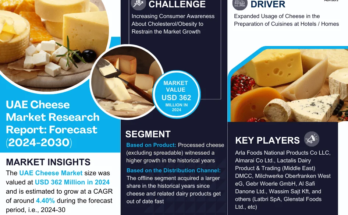The Retinal Biologics Global Market Report 2024 by The Business Research Company provides market overview across 60+ geographies in the seven regions – Asia-Pacific, Western Europe, Eastern Europe, North America, South America, the Middle East, and Africa, encompassing 27 major global industries. The report presents a comprehensive analysis over a ten-year historic period (2010-2021) and extends its insights into a ten-year forecast period (2023-2033).
Learn More On The Retinal Biologics Market:
https://www.thebusinessresearchcompany.com/report/retinal-biologics-global-market-report
According to The Business Research Company’s Retinal Biologics Global Market Report 2024, The retinal biologics market size has grown rapidly in recent years. It will grow from $22.48 billion in 2023 to $25.45 billion in 2024 at a compound annual growth rate (CAGR) of 13.2%. The growth in the historic period can be attributed to increased incidence of retinal disorders, aging population, rising awareness and early diagnosis, evolving healthcare infrastructure, increasing healthcare expenditure..
The retinal biologics market size is expected to see rapid growth in the next few years. It will grow to $39.69 billion in 2028 at a compound annual growth rate (CAGR) of 11.7%. The growth in the forecast period can be attributed to expanding therapeutic applications, personalized medicine, emerging markets growth, strong pipeline of biologics, collaborations and partnerships, government initiatives and support.. Major trends in the forecast period include non-invasive delivery methods, real-world evidence utilization, expanded indications, regulatory pathway streamlining, patient-centric outcomes..
The increasing prevalence of diabetic eye disease is expected to propel the growth of the retinal biologics market going forward. Diabetic eye disease is a complication of diabetes that affects the eyes by causing vision loss and blindness in people with diabetes. Retinal biologics hold the potential for more precise and effective treatment options, allowing for earlier intervention and improved outcomes in preventing vision loss associated with diabetic eye disease For instance, in June 2023, according to a research study conducted by the American Medical Association, a US-based professional association and lobbying group of physicians and medical students, diabetic retinopathy affected 9.60 million individuals in the United States, constituting 26.43% of the diabetic population, while vision-threatening diabetic retinopathy was observed in 1.84 million people, accounting for 5.06% of those with diabetes. Therefore, the increasing prevalence of diabetic eye disease is driving the growth of the retinal biologics market.
Get A Free Sample Of The Report (Includes Graphs And Tables):
https://www.thebusinessresearchcompany.com/sample.aspx?id=11911&type=smp
The retinal biologics market covered in this report is segmented –
1) By Drug Class: Vascular Endothelial Growth Factor (VEGF)-A Antagonist, Tumor Necrosis Factor (TNF)-A Inhibitor
2) By Indication: Macular Degeneration, Diabetic Retinopathy, Uveitis, Diabetic Macular Edema, Other Indications
3) By Distribution Channel: Hospitals, Pharmacies, Specialty Clinics, Online Pharmacies, Other Distribution Channels
Product innovation is a key trend gaining popularity in the retinal biologics market. Major companies operating in the retinal biologics market are focused on developing innovative products to strengthen their position and gain a competitive advantage. For instance, in May 2023, F. Hoffmann-La Roche Ltd., a Switzerland-based healthcare company, announced that the U.S. Food and Drug Administration had accepted the company’s supplemental biologics license application (sBLA) for Vabysmo (faricimab) for the treatment of macular edema following retinal vein occlusion (RVO). Acceptance was based on two Phase III trials that showed early and persistent visual improvement with Vabysmo, achieving the primary endpoint of non-inferiority to aflibercept. This product is the first bispecific antibody approved for the eye to treat neovascular or ‘wet’ age-related macular degeneration and diabetic macular edema. Further studies showed an absence of blood vessel leakage in the retina in Vabysmo patients compared to aflibercept patients.
The retinal biologics market report table of contents includes:
1. Executive Summary
2.Retinal Biologics Market Characteristics
3. Retinal Biologics Market Trends And Strategies
4.Retinal Biologics Market analysis
5.Retinal Biologics Market Size And Growth
6.Retinal Biologics Segmentation
7. Retinal Biologics Regional And Country Analysis
.
.
.
27.Retinal Biologics Competitive Landscape And Company Profiles
28.Retinal Biologics Key Mergers And Acquisitions
29. Retinal Biologics Future Outlook and Potential Analysis
TOP MAJOR PLAYERS:
- Pfizer Inc.
- F. Hoffmann-La Roche Ltd.
- Merck & Co Inc.
- AbbVie Inc.
- Bayer AG
- Janssen Biotech
- Novartis AG
Contact Us:
The Business Research Company
Europe: +44 207 1930 708
Asia: +91 88972 63534
Americas: +1 315 623 0293
Email: [email protected]
Follow Us On:
LinkedIn: https://in.linkedin.com/company/the-business-research-company
Twitter: https://twitter.com/tbrc_info
Facebook: https://www.facebook.com/TheBusinessResearchCompany
YouTube: https://www.youtube.com/channel/UC24_fI0rV8cR5DxlCpgmyFQ
Blog: https://blog.tbrc.info/
Healthcare Blog: https://healthcareresearchreports.com/
Global Market Model: https://www.thebusinessresearchcompany.com/global-market-model




